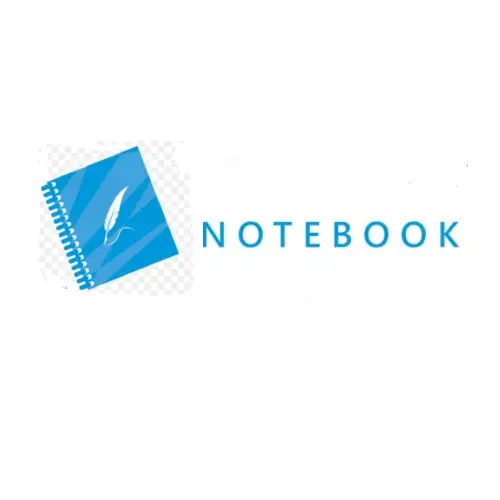
It’s said that we all have at least one novel inside us that is just bursting to come out. But what do you do when you have all the ideas, yet you can't arrange your thoughts into a coherent story?
It might be that you have pages and pages of notes and scribbles trying to make sense of your ideas, or you could just be better at visualizing your ideas than writing them down.
Whatever the case might be, storytelling is far from an easy process due to the sheer organization that is needed to keep your vast and various ideas in check.
Notebook AI is a tool designed to solve this problem, allowing budding authors and writers the chance to keep every single element of their writing process organized and coherent.
Notebook AI is basically a world building tool that lets writers note every single thought, character, place, or plot point efficiently within a digital platform.
In this review, we are going to be taking a deeper look into Notebook AI including what exactly this world building tool offers and how it functions. Let’s take a look.
What Is Notebook AI?
The first thing you need to know about the Notebook AI tool is that its purpose is to help writers create stories, novels, short stories, screenplays, comic books, graphic novels, etc.
So, it was built for people who want to create these things. The program is specifically designed for people who want to create worlds and characters of their own design.
The basic idea behind Notebook AI is to allow users to create a coherent narrative structure by organizing their ideas into a series of notebooks.
Each notebook represents a specific stage of the creative process, with each page representing a particular aspect of the storyline.
You can even add images, sketches, maps, drawings, diagrams, text, recordings, videos, etc. to help you visualize and understand your ideas.
Each notebook has its unique set of tools that will help you create your story. For example, you could use the “Storyboard” tool to quickly sketch out an outline for your project and give yourself an overview of where everything fits together to help you plan your next moves.
You can also use “Character Builder” to create a full-fledged character profile for yourself or anyone else you may be designing.
This includes a wide range of such things as physical appearance, personality, habits, hobbies, and skills. Once you've created your character, you'll be able to use the “Character Creator” tool for further development.
The ‘Plot Planner’ tool is used to create elaborate plots for your stories within Notebook AI. This includes plot points and elements such as a narrative structure and timeline, and even particular events or twists and turns in the story.
The ‘mapmaker’ tool can be used to create detailed maps for your fictional world, such as places, cities, towns, villages, rivers, lakes, forests, mountains, deserts, dungeons, etc.
You can even add your own custom objects to your map, like buildings, roads, bridges, ships, weapons, trees, vehicles, and so on.
Notebook AI also uses a ‘Dialogue Generator' tool to generate unique dialogue between characters.
This includes things like discussions, arguments, debates, dialogue, monolog, etc. As well as this, you can also record audio files and import them directly into your notebooks.
How To Use Notebook AI
Now that you know what Notebook AI is, let's talk about how you actually use it.
Before you start using Notebook AI, make sure that you first download the free version of the app from the website. You will then need to download the software onto your computer.
If you install Notebook AI, then you should select the option to run the program as an administrator. If you don't do this, you won't be able to access certain sections of the program.
After installing Notebook AI on your computer, open the application and click on “Start New Project.”
You'll be brought to the main interface of the Notebook AI app when you can either start a new blank notebook or select one of the existing ones to use.
Once you have selected a notebook, name it by simply entering a title for the notebook in the box provided.
Next, decide on the type of notebook that you want to create. There are two types: storyboards and characters. A storyboard helps you plan out the overall storyline of your project, working as a movie script of sorts.
The only difference is you don't need to write down every detail of the story. Instead, you just have to provide enough information for the system to figure out the rest of its details.
A character notebook allows you to create complete character profiles, which act as a complete description of a specific individual.
For example, if you were creating a character profile, the facts that you would want to include would range from simple knowledge (such as name, age, gender, height, weight, eye color, hair color, skin tone, ethnicity, nationality, etc.), to more personal factors (such as occupation, hobbies, personality traits, etc.).
You might want to create more than just one storyboard if you're planning on making one. Each storyboard represents a different aspect of the overall plot.
If you were planning on writing multiple chapters of a book, you'd likely create multiple storyboards, with each storyboard representing each chapter.
The same goes for character profiles, as you'll need more than one if you are planning on having multiple characters!! This means that you will only need to fill out a few fields when creating the profile.
Next, decide whether you want to include pictures in the notebook. By default, Notebook AI doesn't include any images, but you can easily add photos by clicking on the “Add Picture” button located under the “Images” tab.
You can resize an image by dragging its edges. You can also change the background color of the image by clicking the color box in the lower right corner of the image
Before starting your first storyboard, you'll want to set up some basic format options. To format text, click on the ‘Formatting’ tab located in the top right corner of the window.
You can change all sorts of things such as font size and line spacing, paragraph indenting, bullet point styles, etc.
To begin creating your storyboard, go to the 'Storyboard' tab in the upper left corner, and then you're ready to start typing!
If you don’t know what to say, you can always use the “Search” button located at the very top right corner of the screen. Type in whatever you're looking for and press Enter.
You can either save the content right away by pressing the “Save” button, or you can preview it by clicking on the “Preview” button.
When you are satisfied with the contents of the notebook, you can either close it or you can continue editing it.
To edit the notebook cells, just double-click on the cell you want to modify. When you choose to format a document, you will be presented with all the available formatting options at once.
These include things like changing the font, adding bullet points, changing the background color, and adjusting margins, among others.
After you are done tweaking the format options, you can click the “Create New Row” button to start creating new rows.
You may find that you need to insert an image as you work through the notebook.
To do this, all you need to do is click the “Insert Image” button from the toolbar located at the top of your screen. You will then be able to select whether to insert a new image or use an existing image.
To add a new image, you need to browse through your computer’s file system to locate an image you want to use.
You can either take a picture from your camera roll, your Facebook account, your Dropbox, your Google Drive, your OneDrive, etc., or upload one from your computer.
Once you've decided where you want to insert an image, you can resize the image just like you did before.
Once you're satisfied with the image, you can either crop or rotate it.
Now that you've learned how to create your own stories, you can start writing them!
The Pros Of Notebook AI
Let's take a quick look at some of the pros of this particular story writing tool:
- The tool automatically creates a cover sheet for each notebook. This means that you don’t need to worry about manually creating one every time you create a new document.
- Easy to navigate.
- It includes many different templates for you to use when creating your stories.
Various fonts, colors, backgrounds, etc. - It allows you to import images from various sources (Facebook, Flickr, Instagram, Pinterest, etc.).
- Built-in spell checker.
- Notebooks can easily be shared via email, as well as social media such as Twitter, Facebook, LinkedIn, etc.
- You can add comments to your documents.
- Various options when it comes to ways that you can organize your notes.
- You can use a fair amount of the features for free, with additional features opening up with the premium version.
The Cons Of Notebook AI
Of course, there are always going to be certain features that don't work for everyone, so let's take a look at some of the most notable disadvantages that Notebook AI features.
- The overall design of the app isn’t as user-friendly as it could be.
- No interface customization.
- No official themes are included with the app.
- No customization of cell sizes
- No word count feature.
- No backup functionality.
- No tutorials or training.
- Does not support Microsoft Word files.
- Compatible with Mac computers only.
- The app requires macOS Sierra or later.
Final Thoughts On Notebook AI
Notebook AI is easy to use and offers everything that you will need to create your own stories. However, there are some drawbacks to the app.
For example, the general look and feel of it is not as user-friendly as it could be.
Furthermore, the fact that it doesn’t include a word count feature means that you can’t keep track of how much text you have written.
It requires macOS Sierra or later, meaning it can only run on older versions of Mac OS X, and is only suitable for Mac users.
However, if you fit these criteria, and are looking for a simple and easy way to create your own story, then Notebook AI is definitely worth checking out.









